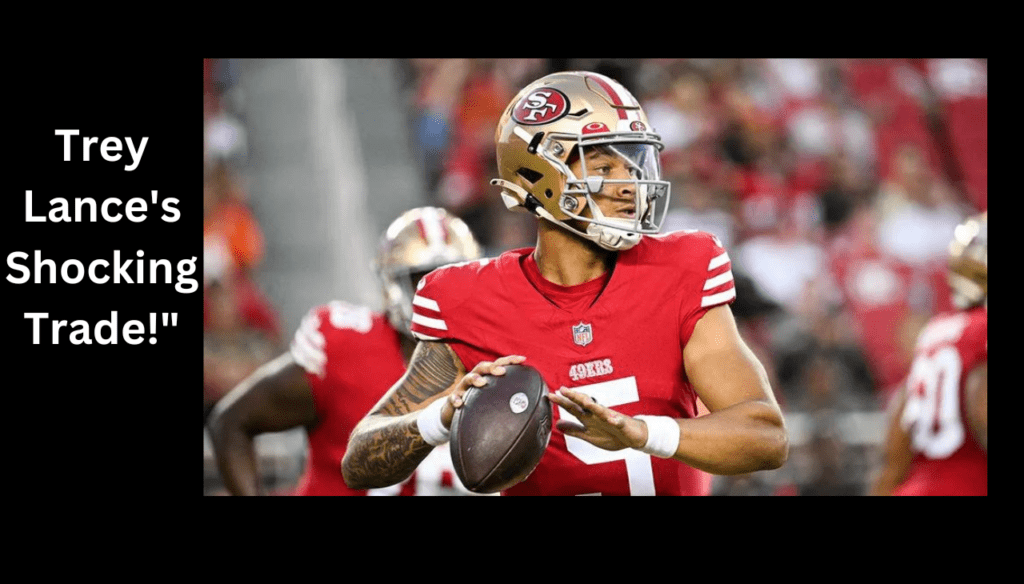Numerous Friday nights were interrupted by breaking news: the Dallas Cowboys executed a trade to acquire quarterback Trey Lance, the former third overall pick in the 2021 NFL Draft. This transaction merely required surrendering a fourth-round pick to the San Francisco 49ers, a relatively modest cost for obtaining a potentially influential talent in a pivotal football position.
Although the San Francisco 49ers invested several future picks to secure Lance’s services two years ago, they had already abandoned their hopes for this highly anticipated cornerstone of the franchise. After spending his rookie season as Jimmy Garoppolo’s backup, Lance assumed the starting role in 2022 before a season-ending ankle fracture prematurely ended his campaign.

In the meantime, the emergence of late-round find Brock Purdy led him to become San Francisco’s new quarterback. With the addition of Sam Darnold during the recent offseason, who also took on the backup role, Trey Lance found himself without a place in the Bay Area. Consequently, the 49ers chose to minimize their losses, recouping what they could—an inadequate return in comparison to their initial investment.
The sudden decline in Lance’s prospects in San Francisco might understandably breed doubt among Cowboys enthusiasts regarding his potential trajectory. The swift change in the 49ers’ stance, particularly without alterations in coaching or management since his draft selection, gives rise to valid inquiries about his genuine potential.
Nevertheless, it’s worth noting that this 23-year-old is a mere two years removed from being chosen as the third overall pick. He was picked ahead of Justin Fields (Bears) by eight selections and Mac Jones (Patriots) by twelve, both of whom are slated as starters for the 2023 season. Whether the 49ers mishandled Lance’s development or if his injury-induced misfortune was the primary factor, a persuasive argument remains for his untapped potential.
The Cowboys are taking a risk by relinquishing a fourth-round pick in the upcoming draft. In the previous April, they secured DE Viliami Fehoko at the 129th spot, adhering to their original position in the round. Assuming another playoff-bound year for Dallas, next year’s fourth-round pick should once again fall in the latter half of the 120-130 range.
Historically, the fourth round, occurring on Day 3, has yielded mixed outcomes for the Cowboys. Notable successes include Dak Prescott in 2016, as well as RB Tony Pollard, TE Dalton Schultz, C Tyler Biadasz, and DE Dorance Armstrong. Alongside these achievements, less memorable selections emerged post-2016, such as DE Charles Tapper, WR Ryan Switzer, and DB Reggie Robinson. The verdict remains open for recent picks like LB Jabril Cox, OL Josh Ball, TE Jake Ferguson, and Fehoko, though the pattern appears consistent. Ferguson shows promise, while Cox and Ball are precariously holding onto roster spots in their third years.
Given this consistent 50/50 dynamic with fourth-round selections, the logic behind investing one in potential talent like Trey Lance becomes apparent. It’s a maneuver aimed at possibly strengthening their backup QB role for the upcoming years, potentially enhancing their safeguards against a 30-year-old starter.
An undeniable fact is that the Cowboys previously lacked a pipeline of QB prospects. Cooper Rush, who turns 30 in November, and Will Grier offered limited long-term potential. Grier might not have even secured a place on Dallas’ 53-man roster in the following week, given his diminishing stock, which was low enough to consider placing him on the practice squad.
If nothing else, Dallas employed a fourth-round pick to replace Grier with Lance, fostering developmental advancement. They shifted from a 28-year-old third-round pick from 2019 to a 23-year-old third-overall pick in 2021. The result might involve sacrificing a future starter in another position, akin to another Pollard or Biadasz. Alternatively, it might merely entail relinquishing the next Tapper or Robinson, who fades into obscurity within the organization.
Only time will reveal whether this gamble proves successful. Nonetheless, it’s undoubtedly a risk worth embracing, with the cost offering substantial value in comparison to the possible rewards. Trey Lance could potentially mark the most significant infusion of QB talent for the Cowboys since their selection of a promising player from UCLA in 1989. Even if the outcome is unfavorable, it signifies a bold front-office move aligned with their expressed desire to rekindle the team’s former glory.